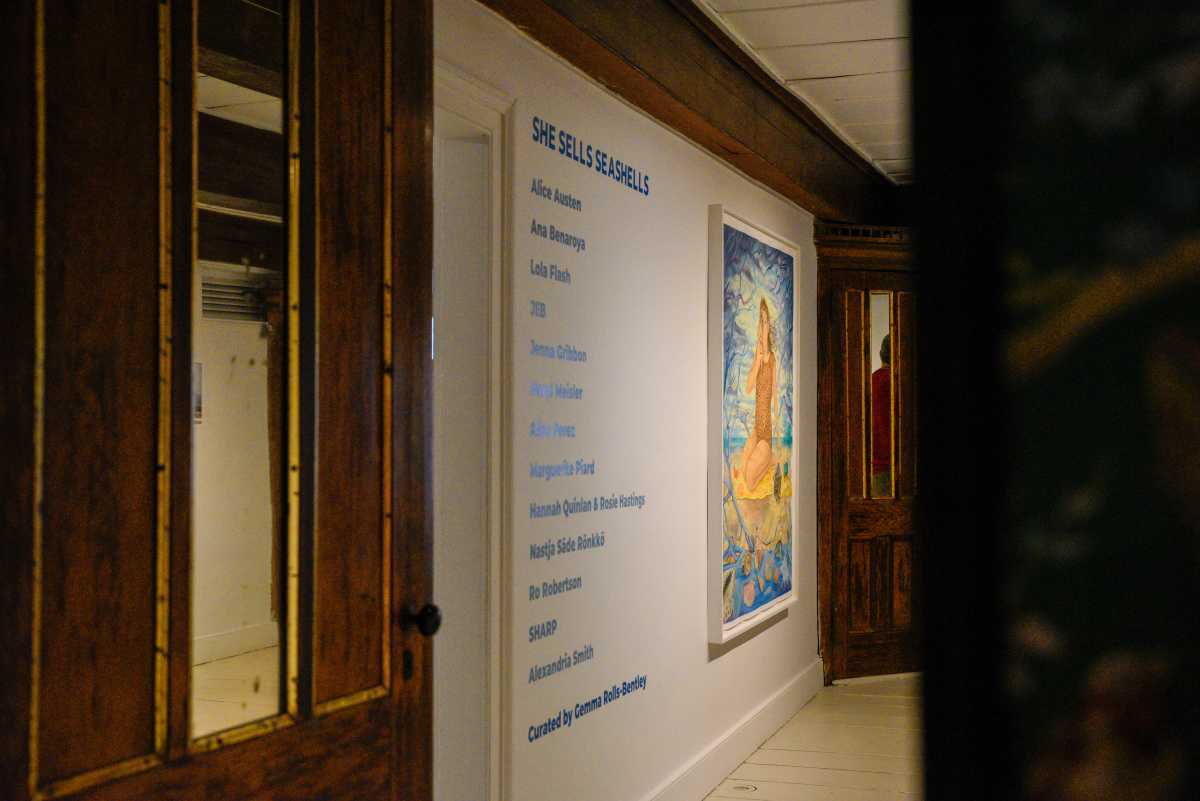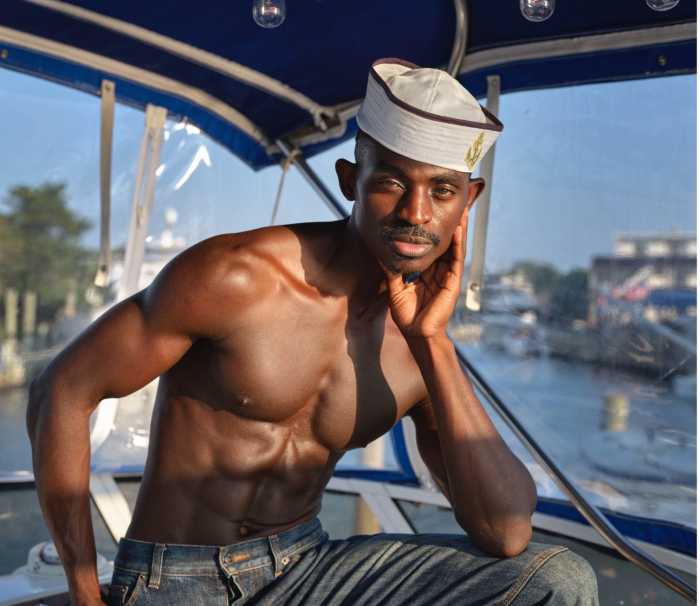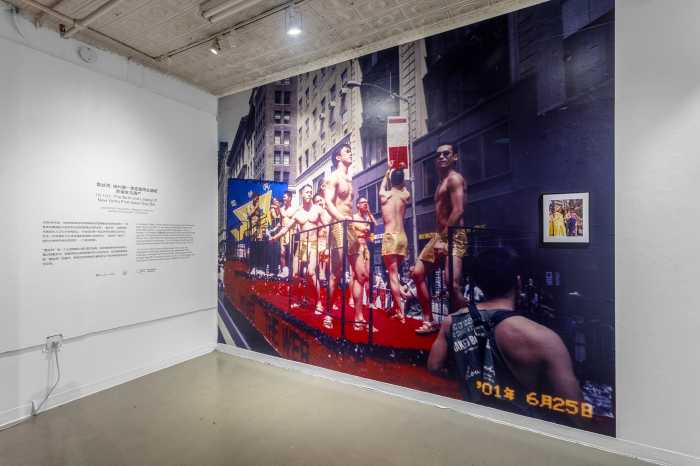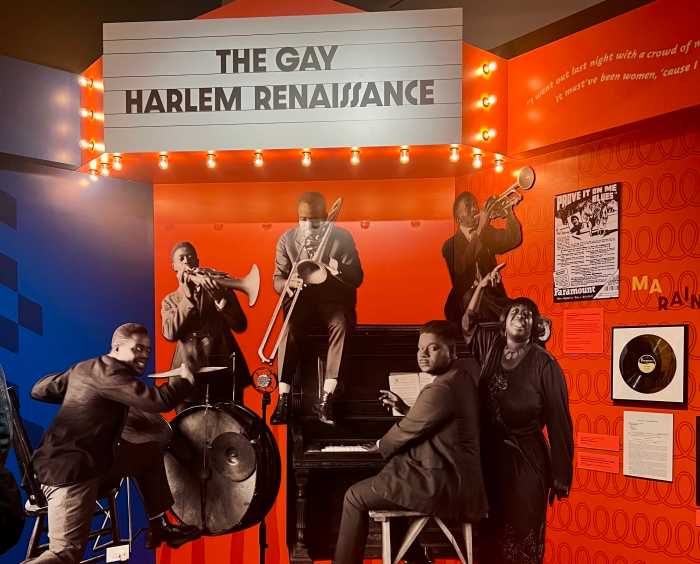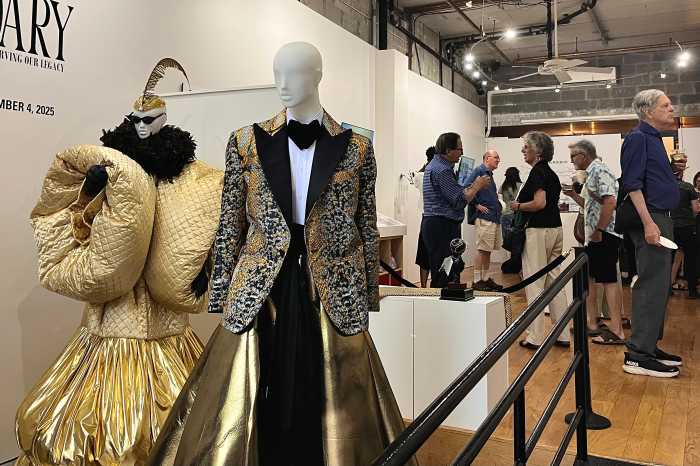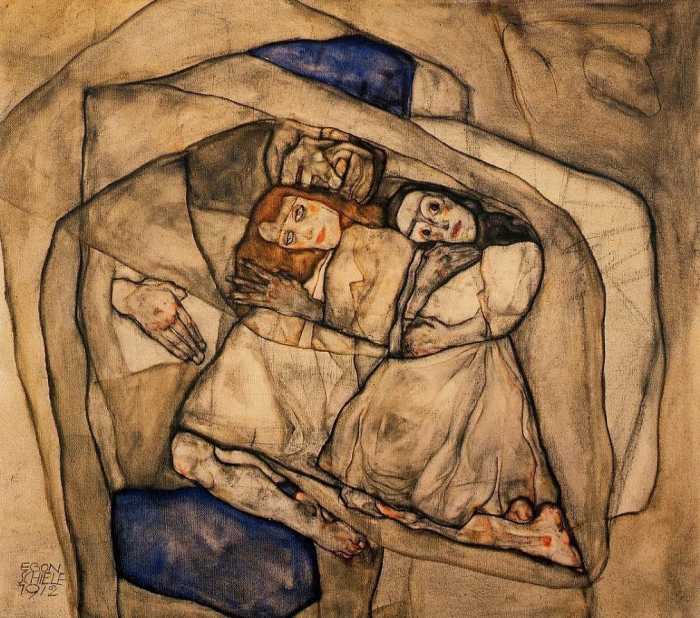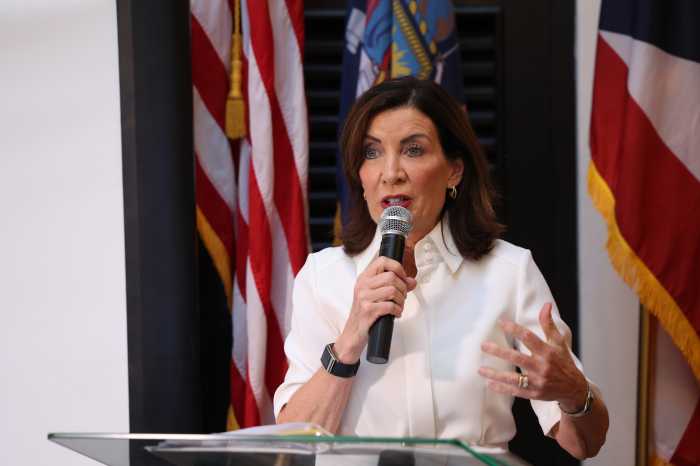On a recent wet and rainy Saturday afternoon, the Alice Austen House Museum unveiled a new exhibition examining a longstanding relationship between queer women and the coast.
The idea behind the project sparked over two years ago in Cornwall, a seaside town in England where two of the artists featured in the exhibition are based. The town has its own long history as a place for queer artists to gather, particularly around the 20th century when an artist colony formed.
Across the pond, and around the same time, Alice Austen was documenting a changing New York City by photographing her queer home life on Staten Island and the lives of immigrants in Manhattan. The museum today, also known as Clear Comfort, is run out of the waterfront home Austen shared with her partner, Gertrude Tate, for over three decades.
Gemma Rolls-Bentley, the London-based curator of the exhibit, discovered this global parallel while visiting Cornwall and pitched the idea for an exhibit. Those at the Austen House who have been working to recenter the lesbian experience as part of the museum’s mission gladly welcomed the project and began curating “She Sells Sea Shells,” which is now on view.
“Those artists I was interested in in the UK, they were there at the same time that Alice and Gertrude were here. It’s kind of beautiful to think about them all being connected by the ocean, and then all of these artists being connected by the sea through space and time,” Rolls-Bentley said on the day of the opening.
Immediately, many artists who use seashells — or portray women near the coast in their existing work — came to mind. That includes painters Alina Perez and Jenna Gribbon, two American artists featured. But Marguerite Piard, a french artist, painted a piece just for the exhibit: L’eau salée a souvent le goût des larmes, which translates to “Saltwater Often Tastes Like Tears.”
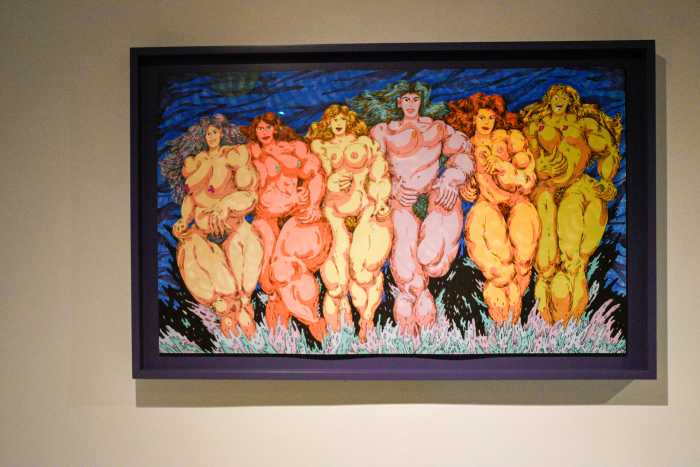
The exhibit joins 12 artists who bring their own reflection on the lesbian connection to the waterfront, adding to the trope’s long legacy. The enduring theme has also appeared in the mainstream in recent years, from the acclaimed 2019 film Portrait of a Lady on Fire to the newer debut novel, “Our Wives Under the Sea,” by Julia Armfield.
Within the broader theme, threads of longing, desire, grief, and ultimately the possibility of connection can be seen as unifying elements of these works spanning mediums and generations.
In the process of selecting artists, the curator learned that Austen also had her own sea shell collection, and a vast collection of maritime photographs, that would tie the effortlessly intergenerational show together.
She Sells Sea Shells signals how the museum has been working to bring Austen’s lesbian identity to a more central part of its mission. In the past, her sexual identity was erased by likely well-meaning individuals who wanted to ensure her photography was not forgotten. But as more knowledge about her identity, struggles, and work resurfaces, it’s clear that Austen lived an out-and-proud lesbian life despite the times.
“Alice created safe spaces for herself and her queer friends here, and that’s really reflected in this exhibition,” said Victoria Munro, who is celebrating her eighth year as the executive director of the museum. She is the first lesbian to run the center.
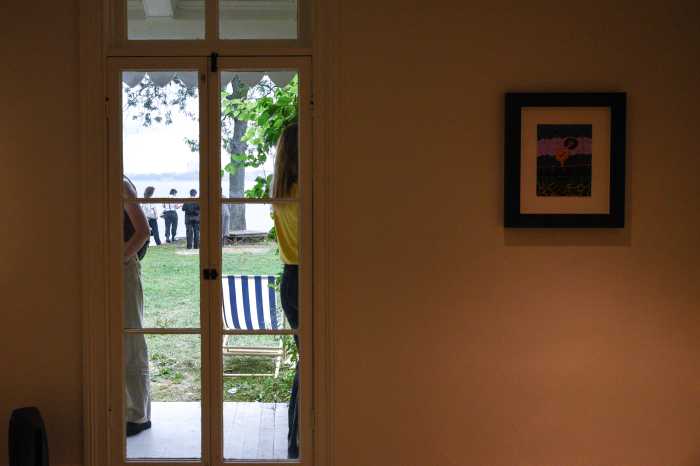
While the Austen House is inclusive to all queer identities, Munro’s efforts strive to represent the lesbian identity that Austen and her longtime pattern, Gertrude, embodied publicly.
“I’ve really spent the last eight years queering, completely queering, the museum and really grounding it as a lesbian home,” added Munro.
Munro helped curate the exhibit by scouring Austen’s photographs that capture the waterfront. Initially expecting to see around 500 such photos, once she dug into the archives she was surprised to find thousands. The prolific nature of her documentation of maritime life through ships at the harbor has not been thoroughly studied.
It was also important to display the new knowledge through a contemporary lens. Her collaboration with Rolls-Bentley brought the themes-analysis work to life while striving to support the artists who center the community in their art today.
One featured photographer, Lola Flash, showcased a portrait of her friend on a pier at Fire Island. The photo was part of her series, “HERE: The Unsung Fire Island,” which showcases the Black and Brown queer people who visit and reside on the island.
“Being here just reminds you that we were here a long time ago, even though people didn’t think that there were gay people, especially lesbians,” said Flash at the opening reception.
“She Sells Sea Shells” will run until February 21, 2026.

